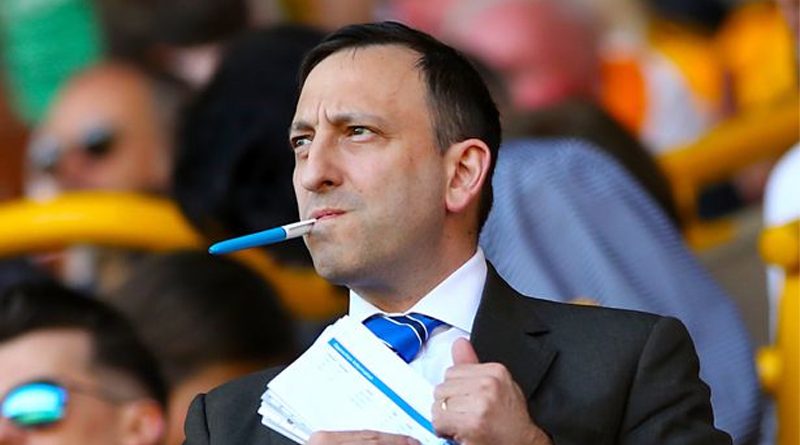A £53.4m loss and what else we learnt from Brighton 2020-21 accounts
Brighton & Hove Albion have released their 2020-21 accounts, showing a £53.4 million loss over the course of a campaign played almost entirely behind closed doors because of the Covid-19 pandemic.
The Seagulls have now posted losses of over £270 million in their four completed seasons as a top flight club. That puts them into the top 10 loss making clubs in Premier League history, a fact which we should all probably remember when demanding a £30 million striker this summer.
It also highlights that the Premier League is not necessarily the land of milk and honey everyone makes it out to be.
During the battle for promotion from the Championship, most of us believed that reaching the top flight would help the Albion become sustainable and maybe even start turning a profit.
Instead, the club is losing more money than ever. The financial investment of Tony Bloom now stands at £427 million alongside a £37.3 million loan taken out from a bank.
According to the accounts, this loan is secured against guaranteed Premier League revenue and repayable between July 2021 and September 2022.
With thanks to the always-excellent Kieran Maguire from the Price of Football podcast, here is what we learned from Brighton & Hove Albion’s 2020-21 season accounts.
The Albion are now one of the biggest loss making clubs in Premier League history
The biggest takeaway from the 2020-21 Brighton accounts appears to be that in just four top flight seasons, the Albion have managed to enter the list of the top 10 biggest loss makers in Premier League history.
Of the 50 teams to have played in the competition since Sky Sports founded English football in 1992, those who have lost more than Brighton’s £270 million are Chelsea, Manchester City, Aston Villa, Everton, Sunderland, Fulham, West Ham United and Middlesbrough.
Every other club on the list has spent at least double the amount of time as Brighton in the Premier League to rack up their losses. For the Albion to be there already is in one waye quite impressive but in another way bloody scary.
Brighton recovered their lost broadcast revenue from 2019-20
Part of the reason why the 2019-20 Brighton accounts showed such a massive loss of £67 million was because six matches took place after June 30th due to lockdown and so the broadcast revenue for those games was not included in that season’s balance sheet.
They instead appear in the 2020-21 figures, explaining why broadcast revenue has increased by nearly £25 million, up from £89.9 million to £123 million.
Television accounts for 81 percent of the Albion’s income but again that is higher than normal with 44 games being accounted for rather than the normal 38.
Even so, that percentage is a reminder of why it is so important that Brighton remain at the top table. It also sheds some light on the reason that no executive from a Premier League club will dare to stand up to Sky or BT for their butchering of the fixture list.
8pm kick offs on Boxing Day at a stadium which has to be reached by public transport are the price we pay for over three-quarters of the Albion’s income coming from broadcast revenue.
Covid-19 cost Brighton £13 million in matchday revenue
The biggest impact of Covid-19 on the 2020-21 accounts is from Brighton having to play virtually the entire campaign behind closed doors.
A couple of Amex matches in November and December were allowed crowds of 2,000, whilst 7,900 were present to see Brighton come from 2-0 behind to defeat champions Manchester City 3-2, sparking a quite wonderful meltdown from Pep Guardiola at full time.
Matchday income was only £494,000 in 2020-21 or 10 weeks worth of wages for DJ Jurgen Locadia. In 2019-20, the Albion had made £13.5 million from their 16 home matches completed before the March lockdown.
The club could quite easily have attempted to claw back some of this lost money through increased ticket costs or putting the price of a bag of Starburst up from £3.20.
It is to their credit that they have not, instead keeping things reasonably affordable for fans. That decision has been repaid with a reported 90 percent season ticket renewal rate for 2022-23 despite the cost of living crisis.
Lowest spend on transfer fees since promotion to the Premier League
One of the more interesting aspects of the Albion’s balance sheet is always transfer spend. Every deal that seems to be completed these days is undisclosed, followed by Andy Naylor or The Argus telling us that the amount paid “is significantly less than what is being reported.”
The accounts for 2020-21 show that Brighton spent £31.3 million on players, their lowest total since winning promotion to the Premier League.
Summer 2020 signings for the first team were restricted to Adam Lallana and Danny Welbeck on free transers with Joel Veltman costing a bargain £900,000 from Ajax.
Jakub Moder and Michal Karbownik arrived for a combined total of around £15 million from Poland and Andi Zeqiri was a £3.5 million capture from Lausanne.
Moises Caciedo was signed for £4 million in January, taking the Albion’s spend to around £24 million. The remaining £7 million would have gone on development squad players such as Jensen Weir, Evan Ferguson, Reda Khadra, Lars Dendoncker and Jan Paul van Hecke.
As well spending their lowest amount, Brighton enjoyed their best ever year in terms of player sales with £17.3 million worth of talent being sold for a net spend of £14 million.
Anthony Knockaert represented around £10 million of the incoming cash when he became a permanent Fulham player to go with the initial £4 million the Cottagers paid to loan the French magician in the 2019-20 season.
Aaron Mooy (remember him?) raised a further £4 million with his move to Shanghai. Brighton also received nominal amounts for the likes of Dale Stephens, Tyson Fury look-a-like David Button and Max Sanders.
The £50 million sale of Ben White to Arsenal took place after June 30th and so will show in the 2021-22 season accounts, as will Dan Burn moving to Newcastle United for £13 million.
Should Yves Bissouma also depart early in the summer, then player sales might enable the balance sheet for the current campaign to show seriously reduced losses or maybe even a profit – depending on how much Bloom sanctions on spending this summer, of course.
The average wage of a Brighton player topped £50,000 a week for the first time
Brighton players earned an average of £50,601 per week in 2020-21, the first time in the club’s history that pay has gone beyond the £50,000. The average wage of the Albion’s 2016-17 promotion winning squad was £18,753 per week.
In 2017-18, Chris Hughton’s side ended the campaign 15th in the Premier League with an average weekly pay of £36,049. Graham Potter worked with a squad of players in 2020-21 who were paid around 38% more than Hughton’s team and finished a place lower.
The Albion’s total wage bill increased by over £5 million, up from £103.2 million in 2019-20 to £108.9 million. Expenditure on matchday staff dropped as games took place behind closed doors, requiring only 90 non-playing staff employed on a part time basis compared to 536 in 2019-20.
Take those stewards, catering staff and other matchday employees off the wage bill and the increase becomes a more significant rise than it would first appear.
Brighton have undertaken a serious trimming of their wage bill for the 2021-22 season. The likes of Maty Ryan, Davy Propper, Alireza Jahanbakhsh, DJ Jurgen and Bernardo have all been alloed to to depart on free transfers. It will be interesting to see how much impact that makes to this campaign’s accounts.
Paul Barber is very well paid
The 2020-21 accounts reveal that the highest paid director at Brighton continues to earn a shade over £2 million per year. Presuming this is Paul Barber, he received a modest increase of £15,000 on his weekly wage from 2019-20.
Nice work if you can get it, although that sort of pay packet does make it far easier for him to consider the controversial season ticket sharing scheme affordable than the average fan who scrimps and saves to afford to go to the Amex.
Tony Bloom is a very rich and generous manner
It is worth mentioning those eyewatering figures regarding the total investment of Bloom in the Albion again. In 2020-21, he lent the club a further £33 million, taking the total amount he is owed by Brighton to nearly £427 million.
£90 million of that is in the form of shares with £337 million in loansm which will not have to be repaid in full – we hope! If Bloom ever did call his owes in, then the Albion would be up a very famous brown creek without any sort of instrument to power their boat.
Such debt to one individual would be far more troubling if it were to anyone other than a lifelong fan. Brighton as a football club is very lucky to have such a generous benefactor willing to spend his vast personal fortune on enabling the Albion to compete in the top division of English football.
That Bloom has invested so much and Brighton have racked up such massive losses and yet still cannot finish above lower mid table in the Premier League is a sign of just how difficult it is to progress at this level.
One clinical striker might well be the answer. But when that player could cost more than £30 million, can you really blame Bloom and the club from being wary about such an investment?
These accounts prove that it must be a case of In Bloom we trust – because without him, Brighton would be nowhere.
Want to read more about the Albion’s accounts? Kieran has condensed the key takeaways into an excellent and informative Twitter thread here.




